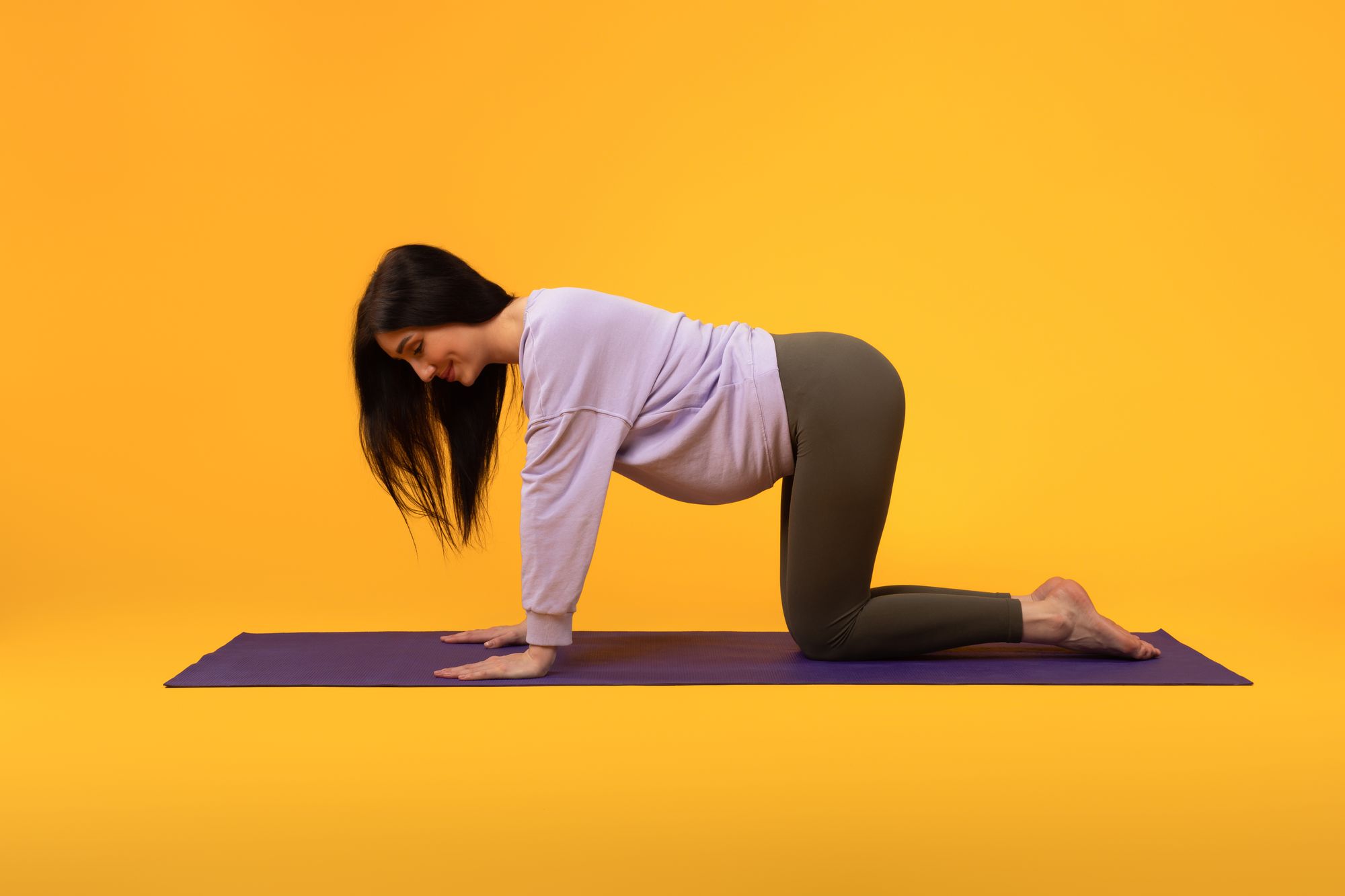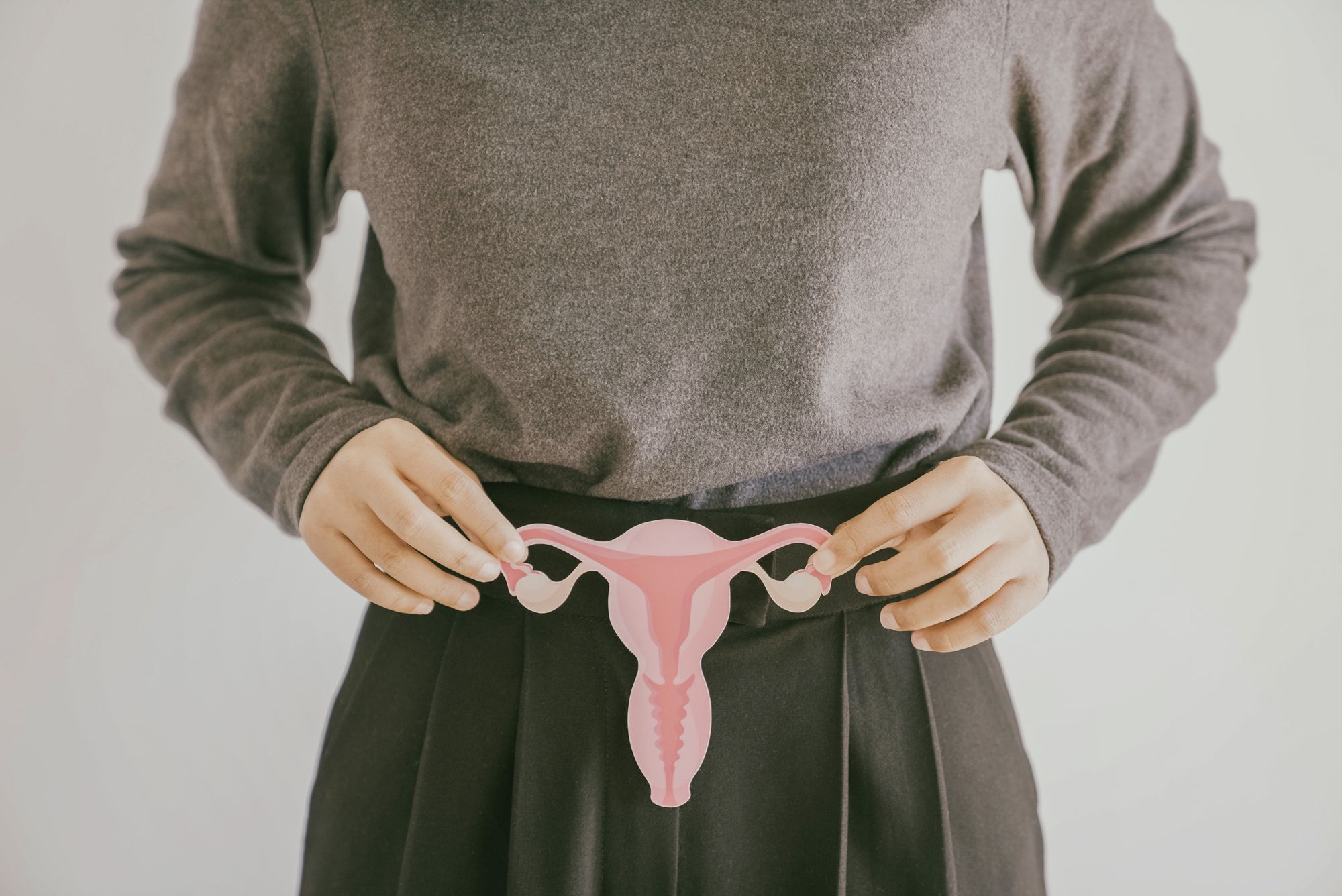Exercising While Trying to Conceive: A Good Idea, or No?
Is exercising while trying to conceive a good idea? Will it help or hurt your chances of getting pregnant? Find answers in this article.

When you’re trying to conceive, it’s only natural that you’d want to “prime” your body to increase your chances of welcoming a mini-you (or multiple mini-yous — we know, it's not a word; forgive us 🫣) into your family.
And one of the first things to go would 100% be those psychological stressors.
After all, research shows that cortisol, the stress hormone, can really throw your hormonal levels out of whack, preventing ovulation, which is the release of an egg from one of the ovaries.
OK, this means you should learn to get better at setting firm boundaries (e.g., say no to working overtime or soul-sucking social engagements), meditating, and catching up with loved ones.
But … aren’t we all forgetting something?
Psychological stressors aren’t the only cortisol-spiking culprits around. Case in point: physical activity.
Yep, just so you know, the body perceives exercise as a form of stress.
So, what does this mean? Should you stop exercising while trying to conceive?
Exercising while trying to conceive is generally a good idea
In most cases, the answer to that question is a no. Despite:
- The media's typical portrayal of exercise being dangerous for those TTC and/or pregnant, and
- (Probably) your own fears of disrupting your hormonal levels or upsetting the blastocyst’s attempt to implant onto your endometrium (i.e., the lining of your uterus)
… a large body of research shows that exercising while trying to conceive is a good idea.
It could help promote regular ovulation, which increases your chances of getting pregnant faster within a set period. (This is because no egg = 0% chance of fertilization.)
Take this study published in Obstetrics & Gynecology, for instance.
The researchers found that women without a history of infertility who got at least 30 minutes of physical activity daily had a 69% lower risk of ovulatory disorder fertility.
There’s also evidence showing that women with polycystic ovary syndrome (PCOS) and irregular cycles who lose 5% to 10% of their body weight — often through a combination of physical activity and healthier lifestyle changes — often see a positive impact on ovulation.
🤔 Should you train or eat differently if you have PCOS? Find answers below:

But, of course, like almost all things in life, there’s a catch. We did say “in most cases”.
Two studies (a 2012 one, plus a 2016 one, both published in Fertility and Sterility) have found that vigorous exercise may reduce your chances of getting pregnant.
Ah, but what’s considered “vigorous” exercise when you’re TTC?
How would you quantify “vigorous”?
And against which benchmarks, specifically? Is it:
- Frequency of exercising while trying to conceive, or
- Intensity of exercising while trying to conceive, or
- Particular type(s) of workouts, or
- Something else altogether?
TBH, the researchers in the two studies mentioned above (the 2012 and 2016 ones) did offer a definition: >5 hours of high-intensity exercise per week.
But if you found that massively unhelpful (because what’s “high intensity”?), these may put you in a better mood:
Moderate intensity exercise: You can comfortably speak, but not sing, during the session
High-intensity exercise: You can’t say more than a few words without gasping for breath during the session
Also, while >5 hours of high-intensity exercise per week is an excellent general guideline for what's considered "vigorous" (and "bad" if you're TTC), we do need to account for individuality.
To illustrate this, let's say a professional female athlete who's used to training 3 hours a day, 5 days a week, is trying to conceive.
What are the chances that 6 hours of high-intensity weekly exercise would be "too vigorous" for her when trying to conceive?
The point here is this: consider your “normal” or baseline fitness when trying to determine what’s too vigorous for you when TTC.
That said, here are a few tell-tale signs you’re exercising too much (or too hard) you may find helpful to keep in mind; you:
- Keep getting sick
- Can’t seem to recover from DOMs
- Struggle with progressive overloading
- Lose motivation to work out
- Stop getting your period
Yep, those are all signs of exercise burnout.
What to note if you’re using assisted reproductive technologies
Exercising while trying to conceive (we’re talking an appropriate amount in terms of frequency and intensity) is generally recommended … unless you’re using assisted reproductive technologies (ART) involving hormonal treatments.
Specifically:
- Medicated intrauterine insemination (IUI), and
- In vitro fertilization (IVF)
Note: this isn't to say that exercise would impede the blastocyst from successfully implanting into the endometrium.
In fact, there's research to suggest otherwise.
Instead, the risk here is that because hormonal injections stimulate the development of multiple follicles (tiny, fluid-filled sacs in the ovary that contain an immature egg each), the ovaries can sometimes enlarge till they rival the size of a grapefruit!
So, given their size, physical activity could increase the chances of ovarian torsion, where the ovary twists around its stalk.
This is a medical emergency.
Important disclaimer: regardless of whether you’re undergoing ART, it’s always, always, still a good idea to have a trusted healthcare provider clear you for exercise while trying to conceive.
They’ll have the necessary knowledge and expertise to screen your medical history for potential concerns.
Stay on top of your fitness and nutrition with GymStreak
Your healthcare provider has given you the go-ahead to exercise while trying to conceive. What now? You’re interested in strength training — but where do you even start? And how do you beat “gymtimidation”?
Suggestion: with GymStreak.
This smart, AI-powered personal trainer tailors your workout plan to your:
- Fitness goals
- Preferred training frequency and workout split
- Equipment availability
Plus, it provides step-by-step guidance on performing exercises you may not be familiar with.
And even sweeter, the app also boasts nutrition tracking, so it's easy to see if you're fueling your body right for the highest chances of successful conception.
Oh, before you leave or download GymStreak (or leave to download GymStreak 🤪), here’s something for you: *blows a mountain’s worth of baby dust on you*
Good luck!
Click Here To Download The Do-It-All App You Need In Your Fitness Journey
*sigh of relief* We'll guide you through it all — step-by-step. Just download the app, and you'll be on otp of your fitness and nutrition like never before.
References
Cena, H., Chiovato, L., & Nappi, R. E. (2020). Obesity, Polycystic Ovary Syndrome, and Infertility: A New Avenue for GLP-1 Receptor Agonists. The Journal of Clinical Endocrinology and Metabolism, 105(8), e2695–e2709. https://doi.org/10.1210/clinem/dgaa285
Chavarro, J. E., Rich-Edwards, J. W., Rosner, B. A., & Willett, W. C. (2007). Diet and Lifestyle in the Prevention of Ovulatory Disorder Infertility. Obstetrics & Gynecology, 110(5), 1050. https://doi.org/10.1097/01.AOG.0000287293.25465.e1
Gaskins, A. J., Williams, P. L., Keller, M. G., Souter, I., Hauser, R., & Chavarro, J. E. (2016). Maternal physical and sedentary activities in relation to reproductive outcomes following IVF. Reproductive BioMedicine Online, 33(4), 513–521. https://doi.org/10.1016/j.rbmo.2016.07.002
Hill, E. E., Zack, E., Battaglini, C., Viru, M., Viru, A., & Hackney, A. C. (2008). Exercise and circulating cortisol levels: The intensity threshold effect. Journal of Endocrinological Investigation, 31(7), 587–591. https://doi.org/10.1007/BF03345606
McKinnon, C. J., Hatch, E. E., Rothman, K. J., Mikkelsen, E. M., Wesselink, A. K., Hahn, K. A., & Wise, L. A. (2016). Body mass index, physical activity and fecundability in a North American preconception cohort study. Fertility and Sterility, 106(2), 451–459. https://doi.org/10.1016/j.fertnstert.2016.04.011
Pakhomov, S. P., Orlova, V. S., Verzilina, I. N., Sukhih, N. V., Nagorniy, A. V., & Matrosova, A. V. (2021). Risk Factors and Methods for Predicting Ovarian Hyperstimulation Syndrome (OHSS) in the in vitro Fertilization. Archives of Razi Institute, 76(5), 1461–1468. https://doi.org/10.22092/ari.2021.356170.1796
Reed, J. L., & Pipe, A. L. (2014). The talk test: A useful tool for prescribing and monitoring exercise intensity. Current Opinion in Cardiology, 29(5), 475–480. https://doi.org/10.1097/HCO.0000000000000097
Schliep, K. C., Mumford, S. L., Vladutiu, C. J., Ahrens, K. A., Perkins, N. J., Sjaarda, L. A., Kissell, K. A., Prasad, A., Wactawski-Wende, J., & Schisterman, E. F. (2015). Perceived stress, reproductive hormones, and ovulatory function: A prospective cohort study. Epidemiology (Cambridge, Mass.), 26(2), 177–184. https://doi.org/10.1097/EDE.0000000000000238
Shi, J., Ren, X., Tian, Q., Sun, A., & Chen, R. (2018). Persistent megalocystic ovaries after ovarian hyperstimulation syndrome in a postpartum patient with polycystic ovarian syndrome: A case report. Journal of Ovarian Research, 11, 79. https://doi.org/10.1186/s13048-018-0451-7
Wise, L. A., Rothman, K. J., Mikkelsen, E. M., Sørensen, H. T., Riis, A. H., & Hatch, E. E. (2012). A prospective cohort study of physical activity and time to pregnancy. Fertility and Sterility, 97(5), 1136-1142.e1-4. https://doi.org/10.1016/j.fertnstert.2012.02.025


